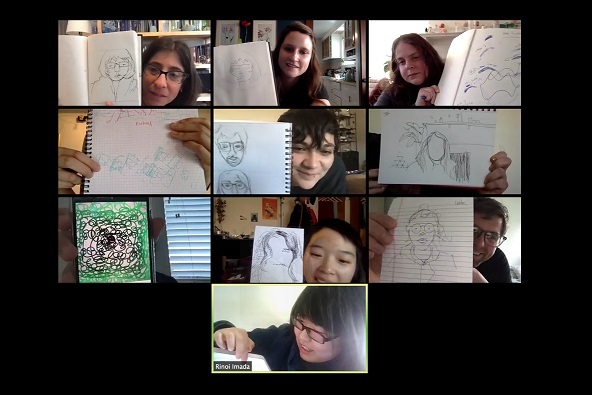As the threat of COVID-19 has rapidly spread throughout the world in the past few weeks, many colleges and universities were among the first to reach the difficult decision to suspend in-person classes in favor of a transition to online instruction. Making such a drastic and sudden change was a challenge for educators and students everywhere, but perhaps more so for art students relying on hands-on studio work and in-person critique to advance their studies.
David Schnuckel, assistant professor of glass at Rochester Institute of Technology’s School for American Crafts, was part of an ad-hoc committee of faculty, administration, and staff of the Rochester university that first met in the beginning of March to start formulating an online teaching strategy in case the campus would need to be closed as a social distancing measure. Within one week from that initial meeting, it became clear that classes would have to be moved to an online format much sooner than expected. “Our semester dramatically unraveled over the rest of that week,” Schnuckel said.
Fortunately, the early meeting of the RIT committee generated some ideas of what would be necessary in a remote learning format to meet the learning objectives of each course, and the glass program there requires coursework outside of the studio that focuses on critical thinking and translates well to online instruction. Still, the tight deadline to produce the online courses was a source of stress, which proved to be the case for many educators throughout the country who were faced with this unprecedented challenge.
Glass educators from around the world quickly banded together to share their ideas and concerns over email and social media. “The glass world is a dedicated community of problem solvers, and creating remote content was suddenly a challenge being faced by the community of instructors at large... there are a lot of different methods being taken and applied, with one common thread - they are all being shared,” says Liesl Schubel, the director of education at UrbanGlass, who initiated a large email chain of ideas from glass educators all over the world.
“This is such new territory, and we all needed to come up with solutions so fast," says Kim Harty, chair of crafts at the College for Creative Studies. She adds that the glass community sharing their ideas "has been a good way to see how others are approaching this situation, what their ideas are, what their challenges are, and share resources, and find ways to help each other."
Out of these dialogues came ideas for remote-friendly assignments involving historical and technical research, demonstration videos, virtual artist talks and studio tours, and writing assignments such as artist statements, exhibition or residency proposals, and grant applications.

“The notion of sharing and community through these crowd-sourcing efforts is not only resonant in this moment, but reminiscent of what the Studio Glass Movement was essentially built on,” notes Schnuckel, “This seems to be a digital echo of what was essential in our origin story several decades ago.”
When campuses reopen, this spirit of digital resource-sharing might become a bigger component of glass pedagogy outside of the studio. Using video conferencing tools to connect with artists and storing resources in cloud services that can be easily shared between instructors and students have been enthusiastically embraced by educators and, as Schnuckel puts it, “seems like a no-brainer now."
Harty echos that sentiment, saying, "Some of the assignments and exercises I'm using now would have benefited before this crisis, but they are sometimes tabled because of my eagerness to be hands on with the material. This experience has helped me slow down and rethink how drawing, research, and reflection assignments will play a larger role when in-person classes start up again."
Helpful links about teaching remotely are part of the Glass Art Society’s Emergency Relief Resources, including a list of online education companies currently offering free subscriptions, articles about the hygienic use of art supplies and tools, and links to a weekly webinar posted by The Art of Education University.




